Discover 35 hidden attractions, cool sights, and unusual things to do in Savannah (United States). Don't miss out on these must-see attractions: Fort James Jackson, Lafayette Square, and Cathedral of St. John the Baptist. Also, be sure to include African-American Monument in your itinerary.
Below, you can find the list of the most amazing places you should visit in Savannah (Georgia).
Table of Contents
Fort James Jackson
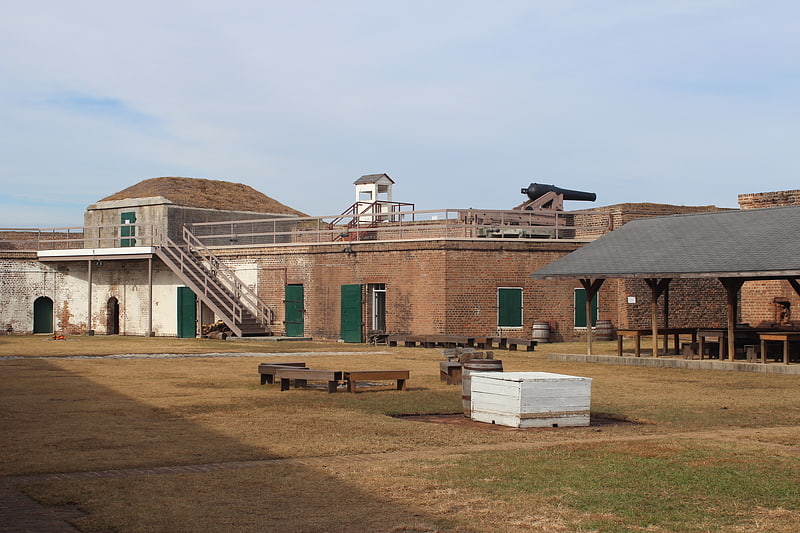
Museum in Chatham County, Georgia. Fort James Jackson is a restored nineteenth-century fort located one mile east of Savannah, Georgia, on the Savannah River. It hosts the Fort Jackson Maritime Museum.
Named in honor of James Jackson (1757–1806), a British-born political figure in Georgia, Fort Jackson was constructed between 1808 and 1812 to protect the city of Savannah from attack by sea. During the American Civil War, it became one of three Confederate forts that defended Savannah from Union forces (the other two were Fort McAllister and Fort Pulaski). In 1862, Fort Jackson came under shelling from a ship captained by an escaped slave, Robert Smalls.
When the Union army commanded by William T. Sherman captured Savannah by land in December 1864, it took Fort Jackson almost immediately. The fort went by the name of Fort Oglethorpe between 1884 and 1905, and was little used by the U.S. military. It was purchased by the city of Savannah in 1924 for park purposes and was fully restored in the 1970s. It was declared a National Historic Landmark in 2000.
Fort Jackson is located at 1 Fort Jackson Road, on the Islands Expressway linking Savannah to Fort Pulaski and the town of Tybee Island. Fort Jackson is owned by the state of Georgia and operated as a museum by the Coastal Heritage Society. In the summer the fort has a daily cannon-firing demonstration.[1]
Address: 1 Fort Jackson Rd, 31404-1039 Savannah
Lafayette Square
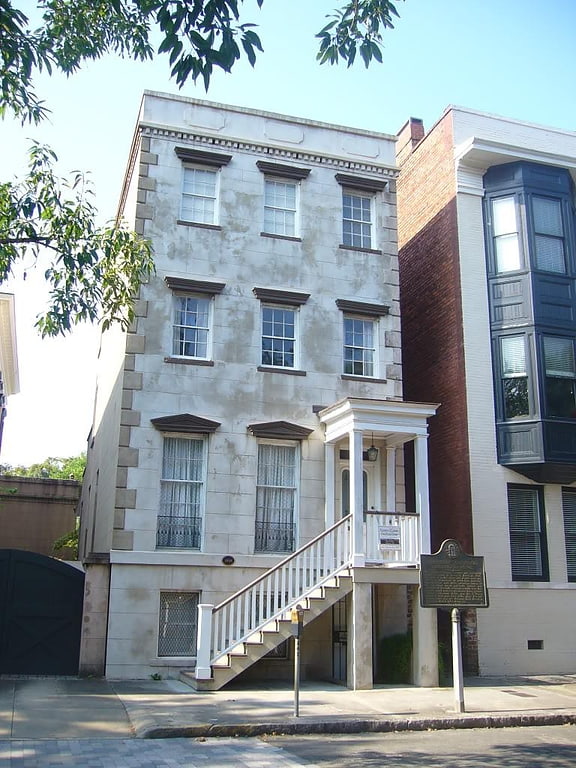
Lafayette Square is one of the 22 squares of Savannah, Georgia, United States. It is located in the fourth row of the city's five rows of squares, on Abercorn Street and East Macon Street, and was laid out in 1837. It is south of Colonial Park Cemetery, west of Troup Square, north of Calhoun Square and east of Madison Square. The square is named for Gilbert du Motier, Marquis de Lafayette, the French hero of the American Revolution who visited Savannah in 1825. The oldest building on the square is the Andrew Low Carriage House, at 329 Abercorn Street, which dates to 1849.
The square contains a fountain commemorating the 250th anniversary of the founding of the Georgia colony, donated by the Colonial Dames of Georgia in 1984, as well as cobblestone sidewalks.
Adjacent to the square is the Roman Catholic Cathedral Basilica of St. John the Baptist. Given this proximity, Lafayette Square features prominently in Savannah's massive Saint Patrick's Day celebrations. Water in the fountain is dyed green for the occasion.
In this area is the museum known as the Flannery O'Connor Childhood Home, which is open to the public.[2]
Address: Abercorn Street, Savannah (Downtown Savannah)
Cathedral of St. John the Baptist

Historic neo-gothic Catholic church. The Cathedral Basilica of St. John the Baptist is a Roman Catholic cathedral and minor basilica in Lafayette Square at 222 East Harris Street, Savannah, Georgia, in the United States. It is the Mother Church of the Roman Catholic Diocese of Savannah.[3]
Address: 222 E Harris St, 31401-4616 Savannah (Downtown Savannah)
African-American Monument

Monument in Savannah, Georgia. The African-American Monument is a public monument in Savannah, Georgia, United States, dedicated in 2002. Located near River Street along the city's waterfront with the Savannah River, the monument commemorates African Americans in the city and highlights the "invisible story of the Trans Atlantic slave trade". The monument consists of four statues depicting an African American family atop a granite pedestal.[4]
Bonaventure Cemetery
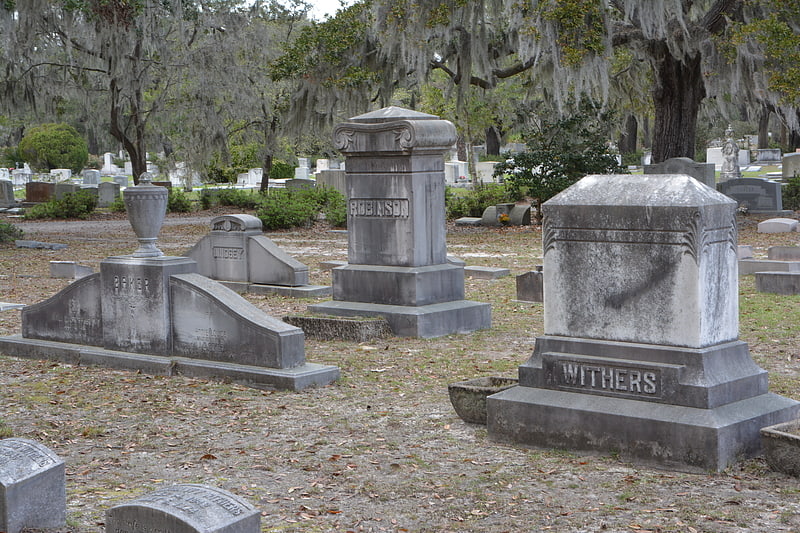
Cemetery in Thunderbolt, Georgia. Bonaventure Cemetery is a rural cemetery located on a scenic bluff of the Wilmington River, east of Savannah, Georgia. The cemetery became famous when it was featured in the 1994 novel Midnight in the Garden of Good and Evil by John Berendt, and in the subsequent movie, directed by Clint Eastwood, based on the book. It is the largest of the city's municipal cemeteries, containing nearly 160 acres.
The entrance to the cemetery is located at 330 Bonaventure Road. Immediately inside the gates is the large and ornate Gaston Tomb.[5]
Address: 330 Bonaventure Rd, 31404-3295 Savannah
Grayson Stadium
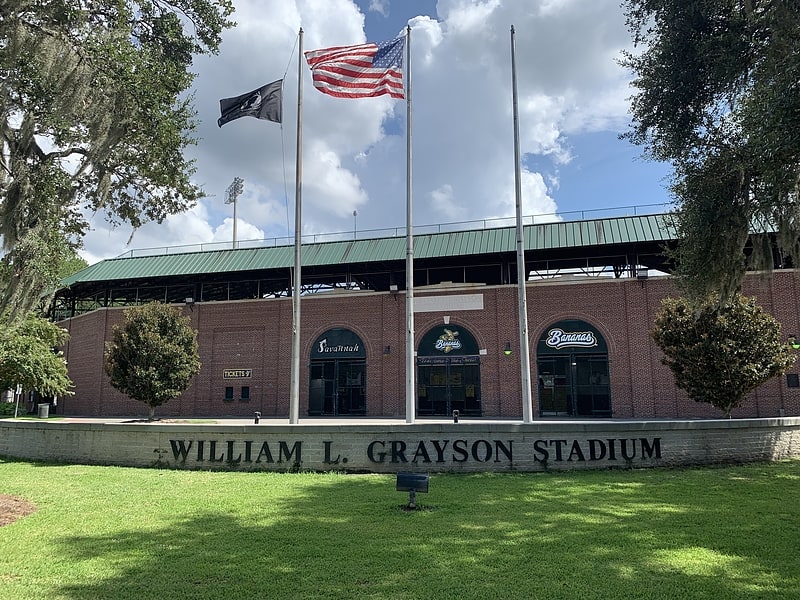
Stadium in Savannah, Georgia. William L. Grayson Stadium is a stadium in Savannah, Georgia. It is primarily used for baseball, and is the home field of the Savannah Bananas of the Coastal Plain League collegiate summer baseball league. It was the part-time home of the Savannah State University college baseball team from 2009 to 2011. It was also used from 1927 until 1959 for the annual Thanksgiving Day game between Savannah High School and Benedictine Military School. Known as "Historic Grayson Stadium" it was built in 1926. It holds 4,000 people. It also served as the home of the Savannah Sand Gnats from 1984 to 2015.[6]
Address: 1401 E Victory Dr, 31404-4107 Savannah (MidTown)
Savannah Civic Center
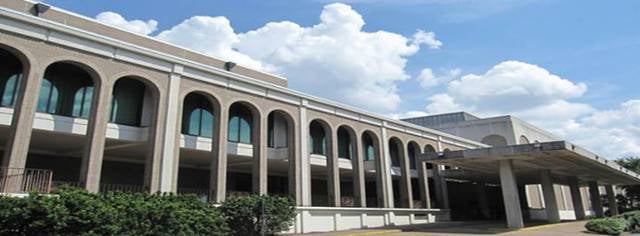
Arena in Savannah, Georgia. The Savannah Civic Center is a multi-purpose facility located in Savannah, Georgia, in Savannah Historic District. Built-in 1974, the facility consists of an arena, theatre, ballroom, and exhibit halls. Throughout the years, the center hosts various concerts, conventions, exhibits, high school and college graduations, trade shows, theatre, ballet, and comedy shows. The venue offers event planning, a national A/V company, and production management. The center has held concerts by many famous artists from around the world.
Each year, the civic center hosts nearly 900 events including the Savannah Tire Hockey Classic, which awards the "Thrasher Cup" and numerous meetings are held in the building's meeting wings. It was the home to the Savannah Bees basketball team, the Continental Basketball Association's Savannah Spirits basketball team, and the Savannah Rug Ratz soccer team of the EISL. The arena between the years of 1986-87 was the host of the Big South Conference's men's basketball tournament.[7]
Address: 301 W Oglethorpe Ave, 31401-3643 Savannah (Downtown Savannah)
Green-Meldrim House
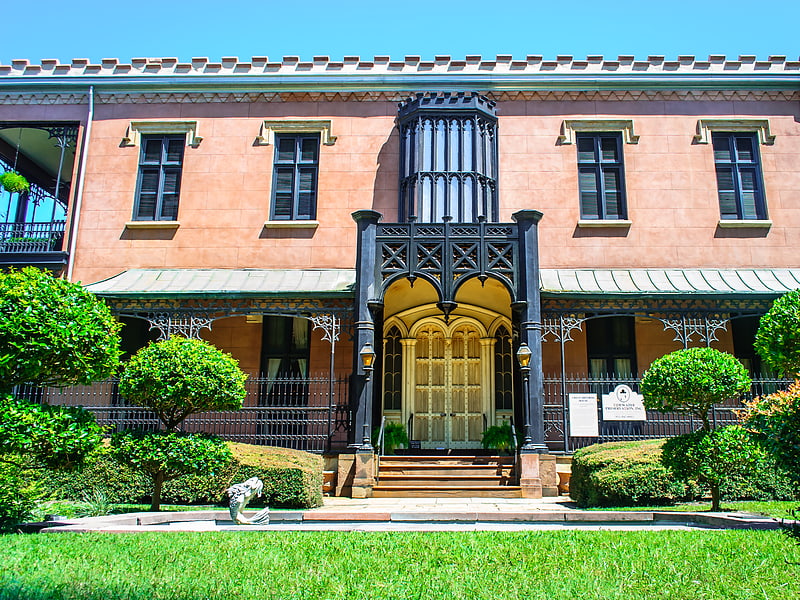
Historical landmark in Savannah, Georgia. The Green–Meldrim House is a historic house at 14 West Macon Street, on the northwest corner of Madison Square, in Savannah, Georgia. Built in 1853, it was designated as a National Historic Landmark in 1976 as one of the American South's finest and most lavish examples of Gothic Revival architecture. The house is owned by the adjacent St. John's Episcopal Church, which offers tours and uses it as a meeting and reception space.[8]
Address: 14 W Macon St, 31401-4356 Savannah (Downtown Savannah)
Emmet Park
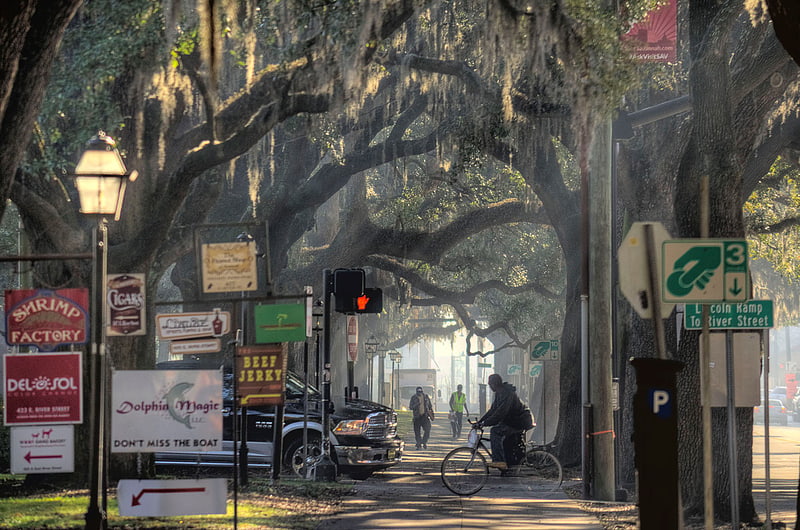
Park in Savannah, Georgia. Emmet Park, also known as The Strand, is an urban park in Savannah, Georgia, United States. Its most prominent section is located in the northeastern corner of the city's historic downtown area, in what was known as the Old Fort neighborhood, it continues in a dotted fashion for around 0.6 miles west along Bay Street to its intersection with Jefferson Street. Monuments occupy several of the individual sections.[9]
Address: 300 E Bay St, Savannah (Downtown Savannah)
Reynolds Square
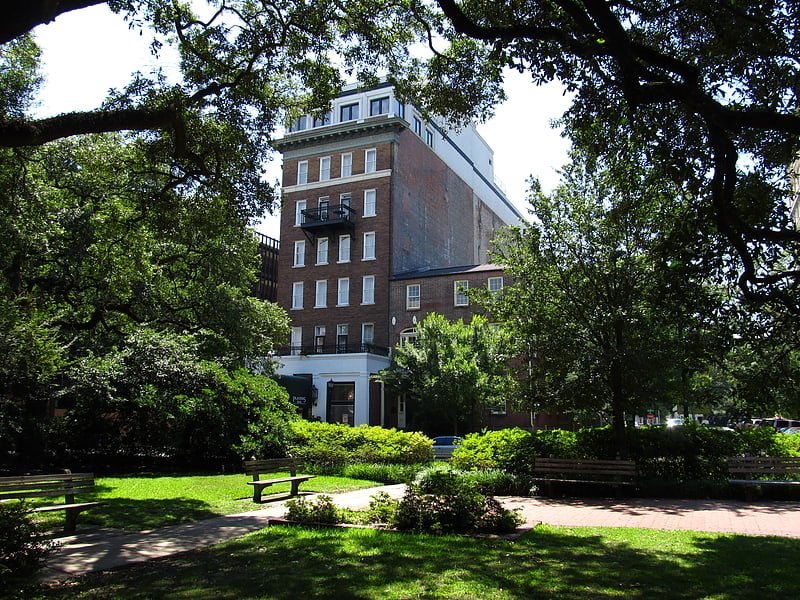
Reynolds Square is one of the 22 squares of Savannah, Georgia, United States. It is located in the first row of the city's five rows of squares, on Abercorn Street and East St. Julian Street. It is east of Johnson Square, west of Warren Square and north of Oglethorpe Square. The oldest building on the square is The Olde Pink House, which dates to 1771.
Originally called Lower New Square (due to its being the first one laid out, in 1734, after the original four), it was later renamed for Captain John Reynolds, governor of Georgia in the mid-1750s. Reynolds was, in fact, an unpopular governor, and it is said that the celebration held upon his arrival in the colony was rivaled only by that held upon his departure.
The square contains a bronze statue, by Marshall Daugherty, honoring John Wesley, founder of Methodism. Wesley spent most of his life in England but undertook a mission to Savannah (1735–1738), during which time he founded the first Sunday school in America. The statue was installed in 1969 on the spot where Wesley's home is believed to have stood. The statue is intended to show Wesley preaching out-of-doors as he did when leading services for Native Americans, a practice which angered church elders who believed that the Gospel should only be preached inside the church building. Scultpor Marshall said: "The moment is as he looks up from his Bible toward his congregation, about to speak and stretching out his right hand in love, invitation, and exhortation. In contrast, the hand holding the Bible is intense and powerful – the point of contact with the Almighty."
Reynolds Square was the site of the Filature, which housed silkworms as part of an early—and unsuccessful—attempt to establish a silk industry in the Georgia colony.[10]
Madison Square
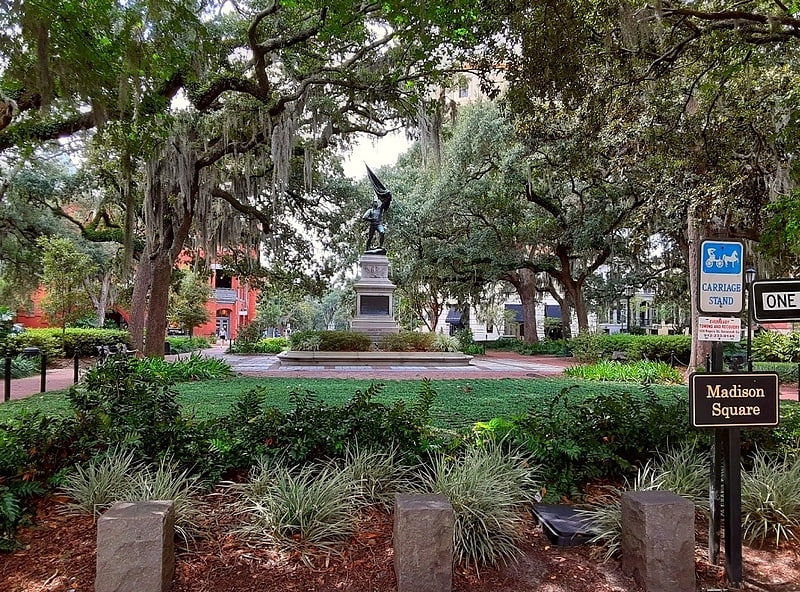
Madison Square is one of the 22 squares of Savannah, Georgia, United States. It is located in the fourth row of the city's five rows of squares, on Bull Street and Macon Street, and was laid out in 1837. It is south of Chippewa Square, west of Lafayette Square, north of Monterey Square and east of Pulaski Square. The square is named for James Madison, fourth president of the United States. The oldest building on the square is the Sorrel–Weed House, at 6 West Harris Street, which dates to 1840.
In the center of the square is the William Jasper Monument, an 1888 work by Alexander Doyle memorializing Sergeant William Jasper, a soldier in the siege of Savannah who, though mortally wounded, heroically recovered his company's banner. Savannahians sometimes refer to this as Jasper Square, in honor of Jasper's statue.
Madison Square features a vintage cannon from the Savannah Armory. These now mark the starting points of the first highways in Georgia, the Ogeechee Road, leading to Darien, and the Augusta Road.
The square also includes a monument marking the center of the British resistance during the siege.
The Masonic Hall, at 341 Bull Street, was designed by Hyman Witcover, also the architect of Savannah City Hall.
In 1971 Savannah landscape architect Clermont Huger Lee and Mills B. Lane planned and initiated a project to install new walk patterns with offset sitting areas and connecting walks at curbs, add new benches, lighting and planting.[11]
Georgia State Railroad Museum
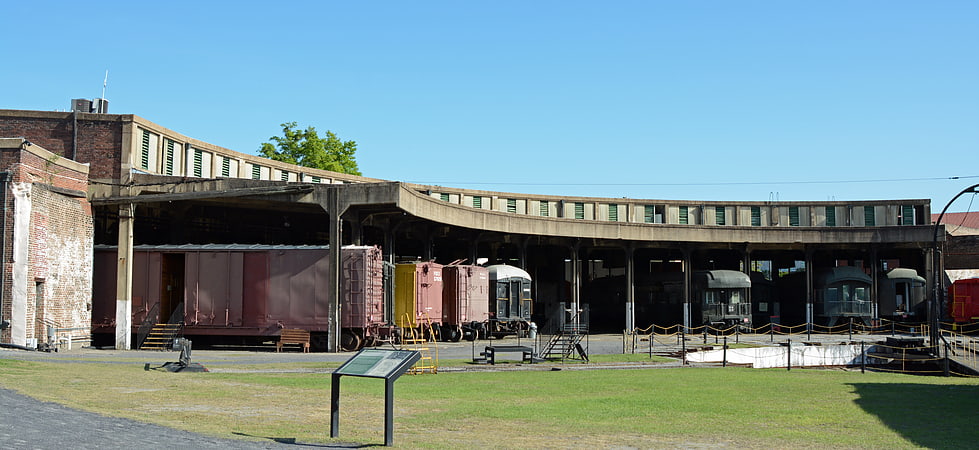
Museum in Savannah, Georgia. The Georgia State Railroad Museum is a museum in Savannah, Georgia located at a historic Central of Georgia Railway site. It includes parts of the Central of Georgia Railway: Savannah Shops and Terminal Facilities National Historic Landmark District. The complex is considered the most complete antebellum railroad complex in the United States. The museum, located at 655 Louisville Road, is part of a historic district included in the National Register of Historic Places.
The museum is across the street from the Central of Georgia Depot and Trainshed, also part of the historic district. The complex was constructed in 1853 by the Central of Georgia Railway (CofG) before the outbreak of the American Civil War. Savannah Shops and terminal buildings were declared a National Historic Landmark in 1976, a listing which was expanded in 1978 to include additional buildings in the complex.
The historic railroad structures at the Georgia State Railroad Museum site include a partial roundhouse with operating turntable, partial machine shop, Tender Frame Shop, Blacksmith Shop, Boiler House, Storehouse & Print Shop, Lumber and Planing Sheds, Coach and Paint Shops, and a partial Carpentry Shop which now houses Savannah Children's Museum. Many of these structures are open for visitors to explore.[12]
Address: 655 Louisville Road, 31401 Savannah (Westside)
Forsyth Park
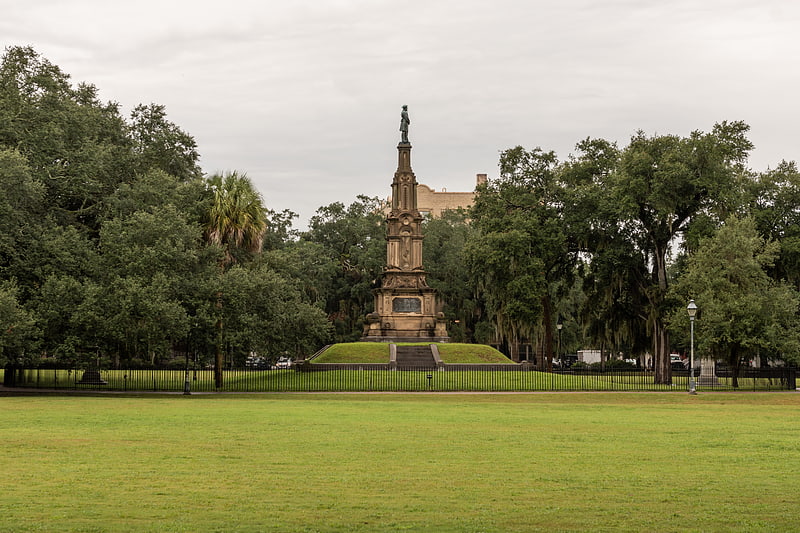
Park in Savannah, Georgia. Forsyth Park is a large city park that occupies 30 acres in the historic district of Savannah, Georgia, United States. The park is bordered by Gaston Street on the North, Drayton Street on the East, Park Avenue on the South and Whitaker Street on the West. It contains walking paths, a children's play area, a Fragrant Garden for the blind, a large fountain, tennis courts, basketball courts, areas for soccer and Frisbee, and home field for Savannah Shamrocks Rugby Club. From time to time, there are concerts held at Forsyth to the benefit of the public.[13]
Address: Drayton St and E Park Ave, 31401 Savannah (Downtown Savannah)
Christ Church
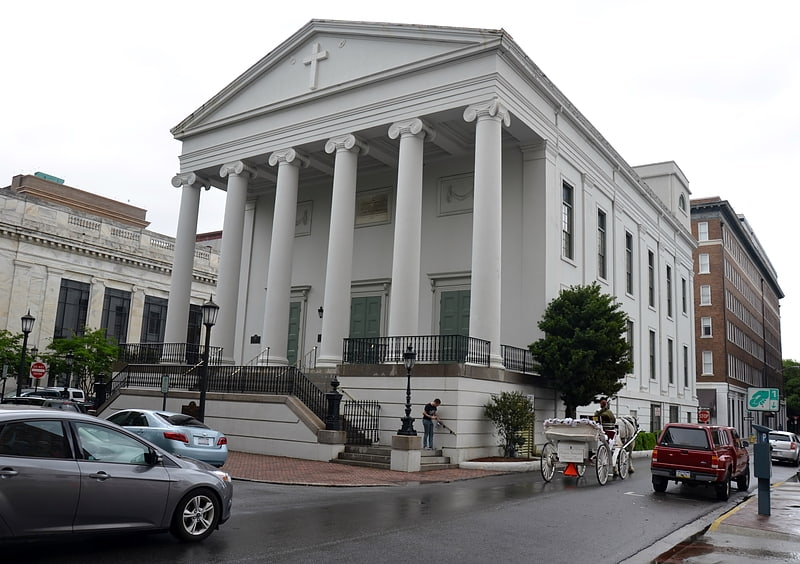
Building. Christ Church is an Episcopal church at 28 Bull Street, Johnson Square, in Savannah, Georgia. Founded in 1733, it was the first church established in the Province of Georgia and one of the first parishes within the Episcopal Diocese of Georgia, earning it the nickname "the Mother Church of Georgia". The present church building was constructed in 1838 and is located in the Savannah Historic District.[14]
Address: 28 Bull St, 31401 Savannah (Downtown Savannah)
Columbia Square
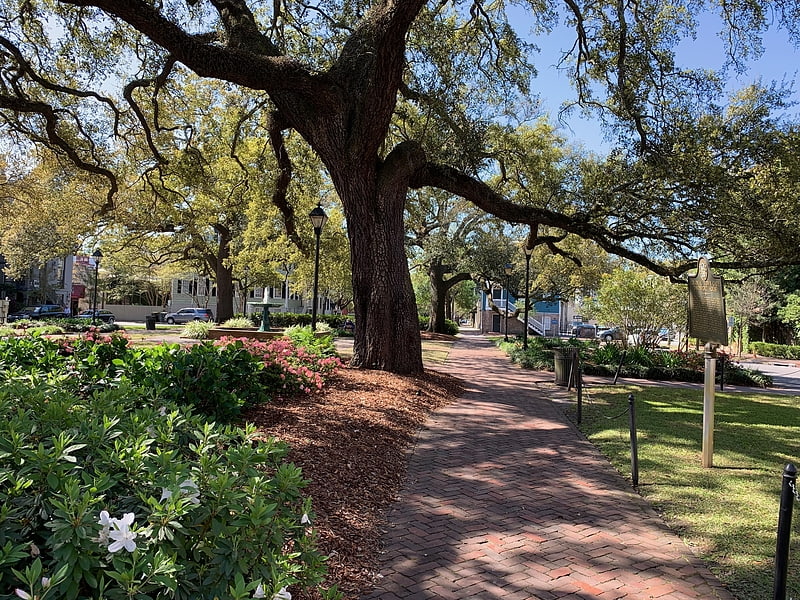
Columbia Square is one of the 22 squares of Savannah, Georgia, United States. It is located in the second row of the city's five rows of squares, on Habersham Street and East President Street. It is south of Warren Square and between Oglethorpe Square to the west and Greene Square to the east. The oldest building on the square is at 307 East President Street, today's 17 Hundred 90 Inn, which, as its name suggests, dates to the 18th century.
The square was laid out in 1799 and is named for Columbia, the poetic personification of the United States. In the center of the square is a fountain that formerly stood at Wormsloe, the estate of Noble Jones, one of Georgia's first settlers. It was moved to Columbia Square in 1970 to honor Augusta and Wymberly DeRenne, descendants of Jones. It is sometimes called the "rustic fountain," as it is decorated with vines, leaves, flowers, and other woodland motifs.
Irish immigrant William Kehoe built a house on the eastern side of the square, at 130 Habersham Street, in 1885. After both his business and his family expanded, he built a larger home, completed in 1892, diagonally across the square at 123 Habersham Street.
The Timothy Bonticou Double House, at 418–420 East State Street, was moved one block south from 419–421 East Broughton Lane in 1972.
The office of Historic Savannah Foundation is in the southwest tything of the square, at 321 East York Street.[15]
Address: Habersham Street, Savannah (Downtown Savannah)
Lucas Theatre
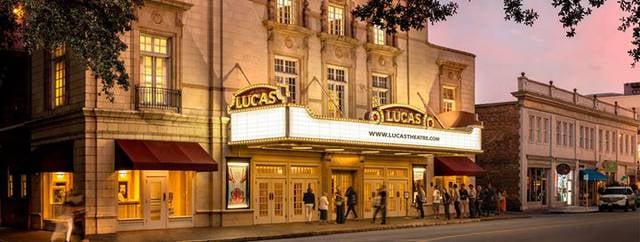
The Lucas Theatre is a theater in Reynolds Square, Savannah, Georgia, United States. Built in 1921, the theater closed in 1976 and was slated to be demolished, but preservation efforts lead to the theater reopening in 2000. The theater, managed by the Savannah College of Art and Design, is the home venue for the Savannah Philharmonic Orchestra.[16]
Address: 32 Abercorn St, 31401-3415 Savannah (Downtown Savannah)
Calhoun Square
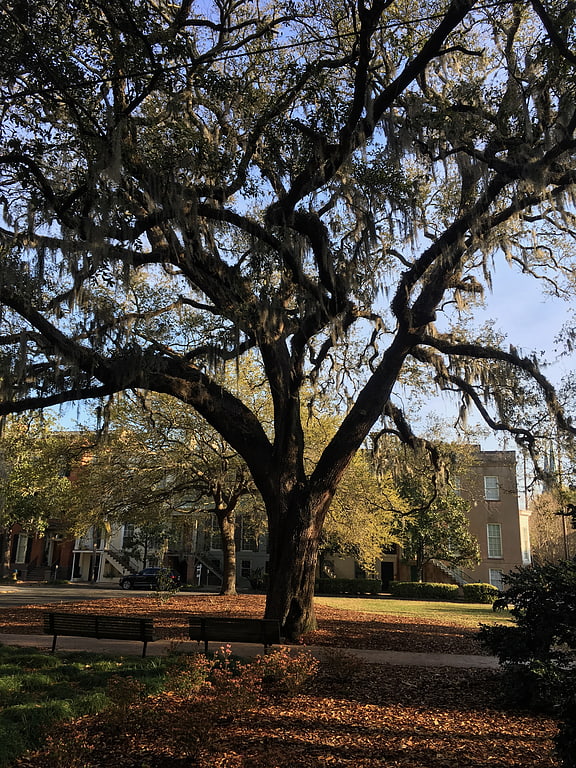
Calhoun Square is one of the 22 squares of Savannah, Georgia, United States. It is located in the fifth row of the city's five rows of squares, on Abercorn Street and East Wayne Street, and was laid out in 1851. It is south of Lafayette Square, west of Whitefield Square and east of Monterey Square. The oldest buildings on the square are at 102 East Taylor Street and 118–122 East Taylor Street, both of which date to 1853.
The square is named for South Carolina statesman John C. Calhoun, who served as Secretary of War, Secretary of State, and as Vice President under John Quincy Adams and Andrew Jackson.
The square is sometimes called Massie Square, in reference to the former Massie Common School House, built in 1855, in the southeastern residential/tything lot of the square.
On the western side of the square is the Wesley Monumental United Methodist Church, founded in 1868.
It is the only square with all of its original buildings intact.
The square is believed to have been built over a slave burial ground, with around one thousand bodies buried in it. In 1855, the bodies of Emily and Rinah, both slaves, were removed to Laurel Grove Cemetery. In 2004, a skull was found by utility workers outside the Massie Heritage Interpretation Center on the square's southeastern side. Due to this connection, a movement was started in 2021 to rename the square Sankofa Square. The Sankofa bird is a Ghanaian symbol expressing the "importance of knowing one's history." Another renaming, this time for Susie King Taylor, was considered in August 2021.[17]
Address: Abercorn Street, Savannah (Downtown Savannah)
Johnson Square
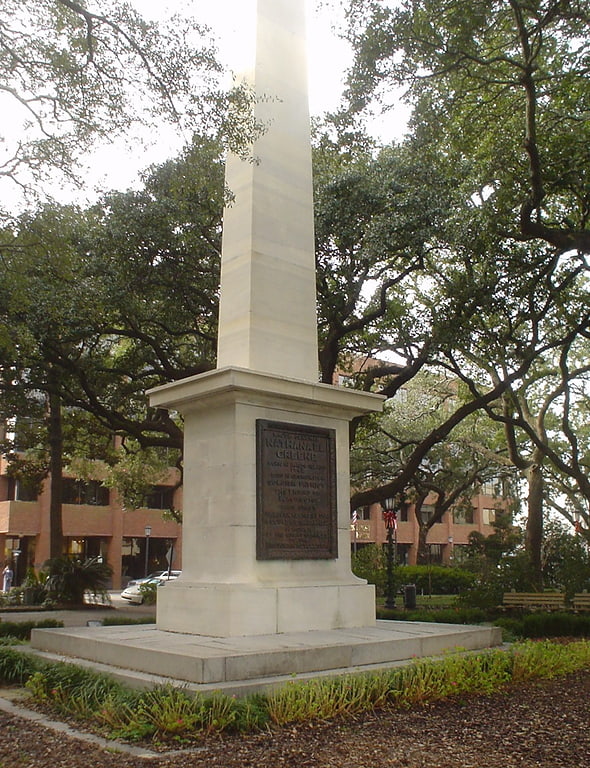
Johnson Square is one of the 22 squares of Savannah, Georgia, United States. Located in the first row of the city's five rows of squares, it was the first of the squares to be laid out, in 1733, and remains the largest of the 22. It is east of Ellis Square, west of Reynolds Square and north of Wright Square. Situated on Bull Street and St. Julian Street, it is named for Robert Johnson, colonial governor of South Carolina and a friend of General James Oglethorpe. The oldest building on the square is 26 East Bryan Street, which dates to 1824.
Interred under his monument in the square is Revolutionary War hero General Nathanael Greene, the namesake of nearby Greene Square. Greene died in 1786 and was buried in Savannah's Colonial Park Cemetery. His son was buried beside him after drowning in the Savannah River in 1793. Following vandalism of the cemetery by occupying Union forces during the Civil War the location of Greene's burial was lost. After the remains were re-identified Greene and his son were moved to Johnson Square. An obelisk in the center of the square now serves as a memorial to General Greene. The cornerstone of the monument was laid by the Marquis de La Fayette in 1825. At that time the obelisk did not yet commemorate any specific individual or event. In fact, due to financial restrictions the unmarked obelisk served for several years as a joint monument to both Greene and Casimir Pulaski. Inscriptions honoring Greene were added in 1886, but the Greenes’ physical remains did not arrive until 1901, following their "rediscovery."
Johnson Square contains two fountains, as well as a sundial dedicated to Colonel William Bull, the namesake of Savannah's Bull Street. Bull was a South Carolinian who assisted Oglethorpe with the establishment of Savannah and, as a surveyor, laid out the original street grid. The sundial has four panels, one on each side of its square granite base. The dial itself is bronze, set atop a marble shaft. One of the base panels reproduces a 1734 map of Savannah.
Another landmark of Johnson Square is the Johnson Square Business Center. This building, formerly known as the Savannah Bank Building, was the city's first "skyscraper", built in 1911. Johnson Square is known as the financial district, or banking square, and many of the City's financial services companies are located here. These companies include the Savannah Bancorp, Savannah Bank, Coastal Bank Headquarters, Bank of America branch, SunTrust branch, TitleMax Corporate Headquarters, and a Regions Bank building.
Christ Church Episcopal occupies the southeastern trust lot of the square at 28 Bull Street. Although it did not have a stand-alone structure during Georgia's first generation, Christ Church was the mother church of the State of Georgia.[18]
Address: Bull Street, Savannah (Downtown Savannah)
Oglethorpe Square
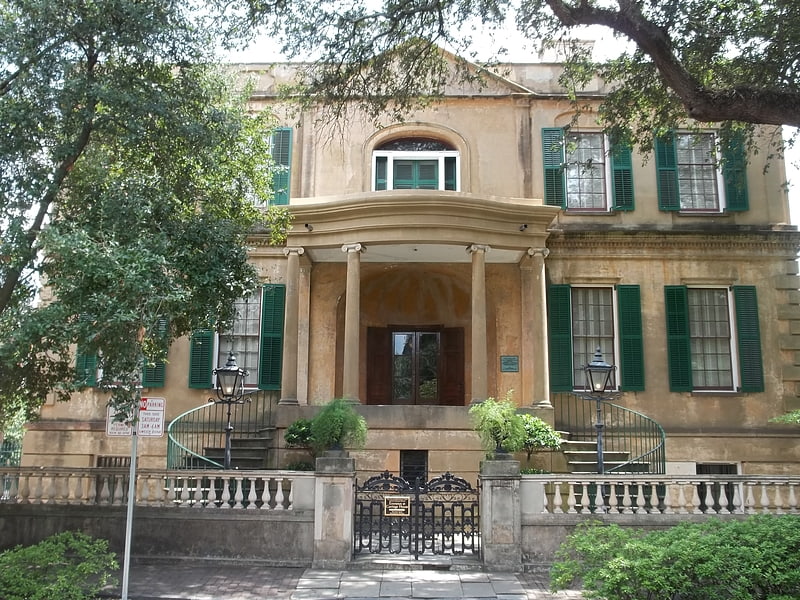
Oglethorpe Square is one of the 22 squares of Savannah, Georgia, United States. It is located in the second row of the city's five rows of squares, on Abercorn Street and East President Street, and was laid out in 1742. It is south of Reynolds Square, west of Columbia Square, north of Colonial Park Cemetery and east of Wright Square. The oldest building on the square is the Owens–Thomas House, at 124 Abercorn Street, which dates 1819.
Upper New Square, as it was originally known, was laid out in 1742 and was later renamed in honor of Georgia founder General James Oglethorpe, although his statue is located in Chippewa Square, to the southwest.
The home of Georgia's first Royal Governor, John Reynolds, was located on the southeastern trust lot (now a parking lot of The Presidents' Quarters Inn) overlooking the square. Reynolds arrived in Savannah on October 29, 1754.
The residences of the Royal Surveyors of Georgia and South Carolina were located on the northeastern trust lots, the site of today's Owens–Thomas House. The Presidents' Quarters Inn, a 16-room historic bed and breakfast, is located in the southeastern trust lot.
The square contains a pedestal honoring Moravian missionaries who arrived at the same time as John Wesley and settled in Savannah from 1735 to 1740, before resettling in Pennsylvania.
A Savannah veterans’ group had unsuccessfully proposed erecting a memorial to veterans of World War II in Oglethorpe Square It was instead installed on River Street.
The Unitarian Universalist Church was originally based on the square, prior to its move to the western side of Troup Square.[19]
Address: 112 E State St, 31401-3715 Savannah (Downtown Savannah)
Orleans Square
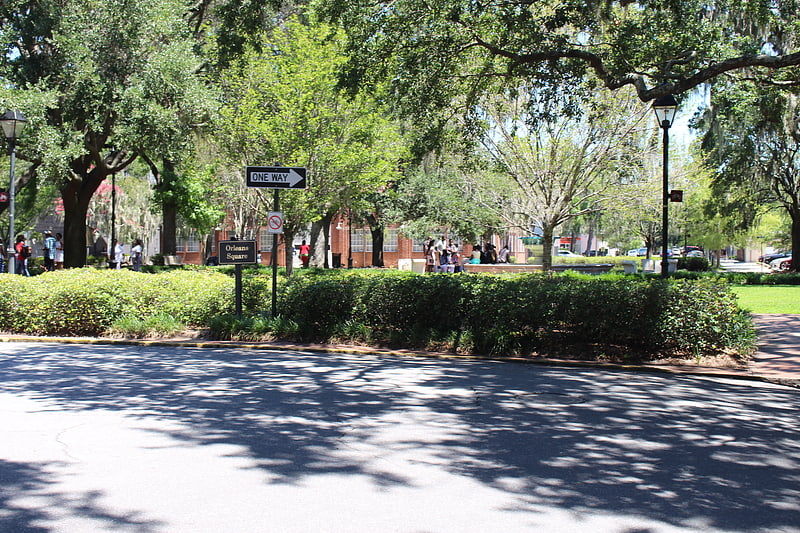
Orleans Square is one of the 22 squares of Savannah, Georgia, United States. It is located in the third row of the city's five rows of squares, on Barnard Street and West McDonough Street, and was laid out in 1815, shortly after the event it commemorates: General Andrew Jackson's victory at the Battle of New Orleans that January. It is south of Telfair Square, west of Chippewa Square and north of Pulaski Square. The oldest building on the square is the John Ash House, at 114–116 West Hull Street, which dates to 1817.
In the center of the square, the German Memorial Fountain honors early German immigrants to Savannah. Installed in 1989, it commemorates the 250th anniversary of Georgia and of Savannah, as well as the 300th anniversary of the arrival in Philadelphia of thirteen Rhenish families.[20]
Address: Barnard Street, 31401 Savannah (Downtown Savannah)
Greene Square

Greene Square is one of the 22 squares of Savannah, Georgia, United States. It is the easternmost square in the second row of the city's five rows of squares. The square is located on Houston Street and East President Street, and is south of Washington Square, east of Columbia Square and north of Crawford Square. The oldest buildings on the square are at 510 East York Street, 509 East President Street and 503 East President Street, each in the southwestern trust/civic block, which are believed to have been built at the same time as the square itself.
The square is named for Revolutionary War hero General Nathanael Greene, an aide to George Washington. A native of Rhode Island, Greene commanded Southern forces during the Revolution, and after the war settled at Mulberry Grove, an estate fourteen miles (23 km) above Savannah. Greene, along with his son, is actually buried in Savannah's Johnson Square.
134 Houston Street, in the square's southeastern tything block, dates to the late 1800s. Between 1899 and the mid-1900s it was the home of the Kate Baldwin Free Kindergarten.
Greene Square was once the center of Savannah's African-American community. In the northwestern trust lot is the Second African Baptist Church, the site where Union Army general William Tecumseh Sherman announced Special Field Orders 15, better known as "40 acres and a mule".
546–548 East President Street (known as the Mary Cullum Property, now occupied by the Green Palm Inn) are two seamen's cottages, built circa 1897.
The John Dorsett House, in the northwestern tything, is the smallest free-standing house in the city, hence its nickname Tiny House. It was moved here from 422 Hull Street.
In 1967 Savannah landscape architect Clermont Huger Lee and Mills B. Lane planned and initiated a project to replace the cistern that caved-in, design and install shoring, close the fire lane, and install new walks, benches, lighting and planting.[21]
Franklin Square
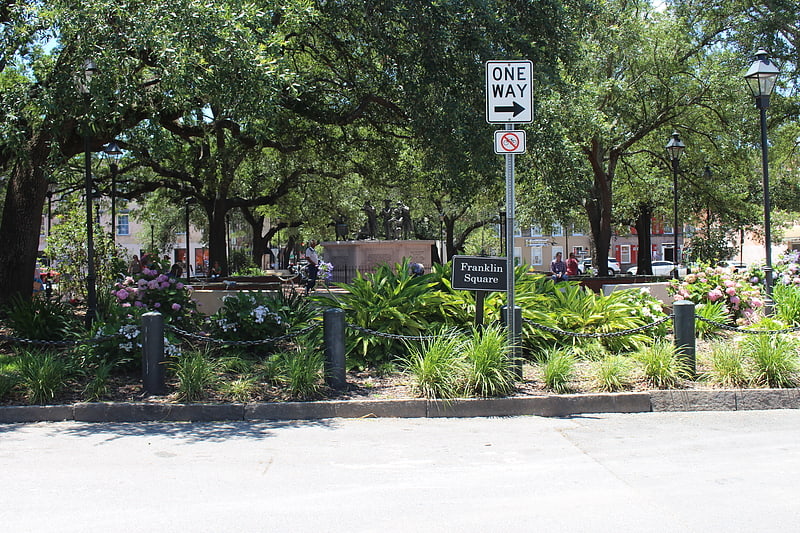
Franklin Square is one of the 22 squares of Savannah, Georgia, United States. It is located in the first row of the city's five rows of squares, at Montgomery Street and West St. Julian Street. It is west of Ellis Square in the northwestern corner of the city's grid of squares. The square now anchors the western end of the City Market retail area.
The oldest building on the square is 317 West Bryan Street, the Abram Minis Building, which dates to 1846.
The square is named for Benjamin Franklin, one of the Founding Fathers of the United States, who served as an agent for the colony of Georgia from 1768 to 1778 and who died in 1790, the year Franklin Square was laid out.
It once contained a forty-foot-tall water tower to distribute water to residents. It was built with after the previous system of public and private surface wells was overwhelmed by the rising population of the city. The water was taken out of the Savannah River west of the Ogelthorpe Canal Basin before being filtered and pumped up to the water tower. Because of the tower, Franklin Square was also known as Water Tank Square, Water Tower Square and Reservoir Square.
The square was destroyed in 1935 with the routing of U.S. Highway 17 on Montgomery Street but was restored in the mid 1980s. In 1967, Montgomery Street was changed from two-way to one-way between Jones and Bay streets; in 1985, however, to assist with the restoration of Franklin Square, it was restored to two-way traffic between Bay and Broughton streets. In 2019, the bi-directional traffic flow was extended from Broughton to Liberty streets.
A memorial honoring Haitian volunteers who fought with Casimir Pulaski during the siege of Savannah, created by sculptor James Mastin, was unveiled in Franklin Square in 2007. It includes a depiction of 12-year-old Henri Christophe, who became the commander of the Haitian army and King of Haiti.[22]
Pulaski Square
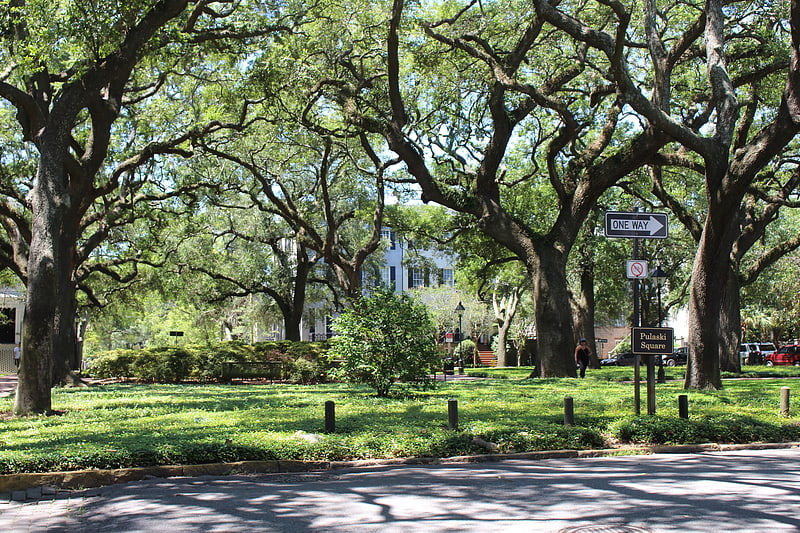
Pulaski Square is one of the 22 squares of Savannah, Georgia, United States. It is located in the fourth row of the city's five rows of squares, on Barnard Street and West Macon Street, and was laid out in 1837. It is south of Orleans Square, west of Madison Square and north of Chatham Square. It is known for its live oaks. The oldest buildings on the square are the Theodosius Bartow House and the Bernard Constantine House, which date to 1839.
The square is named for General Casimir Pulaski, a Polish-born Revolutionary War hero who died of wounds received in the siege of Savannah (1779). It is one of the few squares without a monument; General Pulaski's statue (and, likely, his remains) is in nearby Monterey Square.
Prior to the birth of the historical preservation movement and the restoration of much of Savannah's downtown, Pulaski sheltered a sizeable homeless population and was one of several squares that had been paved to allow traffic to drive straight through its center.
The square is one of the few to have a parking lot occupy one of its blocks (in this case the northeastern trust lot).[23]
Troup Square
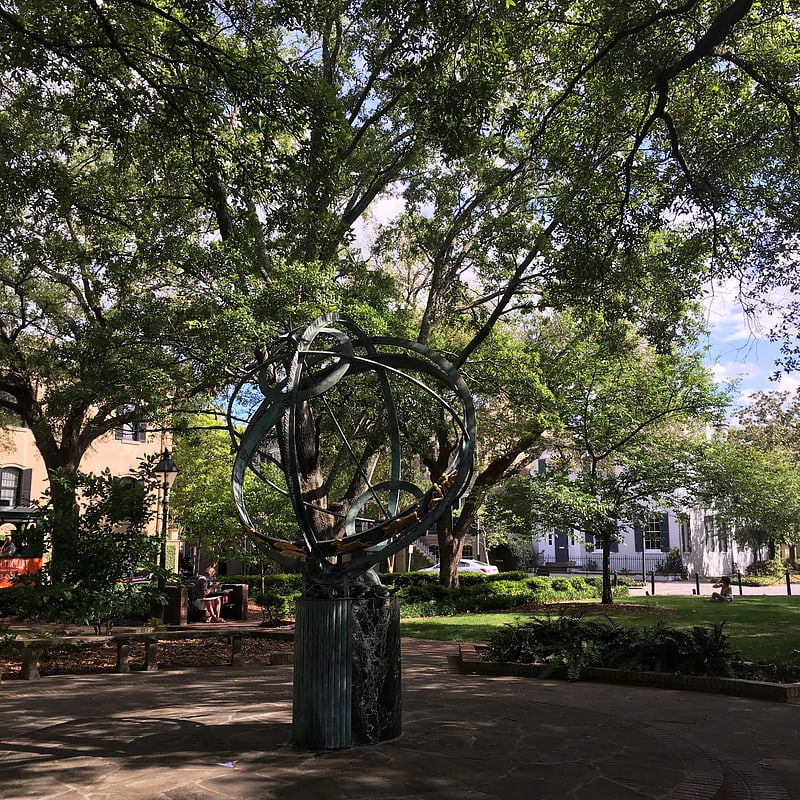
Troup Square is one of the 22 squares of Savannah, Georgia, United States. It is located in the fourth row of the city's five rows of squares, on Habersham Street and East Macon Street, and was laid out in 1837. It is south of Colonial Park Cemetery, east of Lafayette Square and north of Whitefield Square. The square is named for George Troup, the former Georgia Governor, Congressman and Senator. It is one of only two Savannah squares named for a person living at the time.
A large iron armillary sphere stands in the center of the square, supported by six small metal turtles. The armillary has been the source of some controversy, as it is one of the few examples of modern sculpture in the squares.
A special dog fountain is located on the west side of the square. The Myers Drinking Fountain was a gift from Savannah mayor Herman Myers in 1897 and was originally placed in Forsyth Park. When moved to Troup Square, its height was adjusted for use by dogs and has become the site of an annual Blessing of the Animals.
The Unitarian Universalist Church sits on the western side of the square and is its oldest building, albeit not original to the square: built in 1851, it was moved from Oglethorpe Square nine years later. It is believed that James Lord Pierpont wrote the tune to "Jingle Bells" while he was the church's music director, but other sources claim he only copyrighted it when he was in the role, and that he wrote it in Medford, Massachusetts. The oldest building original to the square is the Lewis Cook Duplex, at 313–315 East Charlton Street, which dates to 1852.
In 1969 Savannah landscape architect Clermont Huger Lee and Mills B. Lane planned and initiated a project to remove the central vandalized playground, close the fire lane, install an armillary sundial, and add new walls, benches, lighting, and plantings.[24]
Address: Troup Square, 31401 Savannah (Downtown Savannah)
Chatham Square
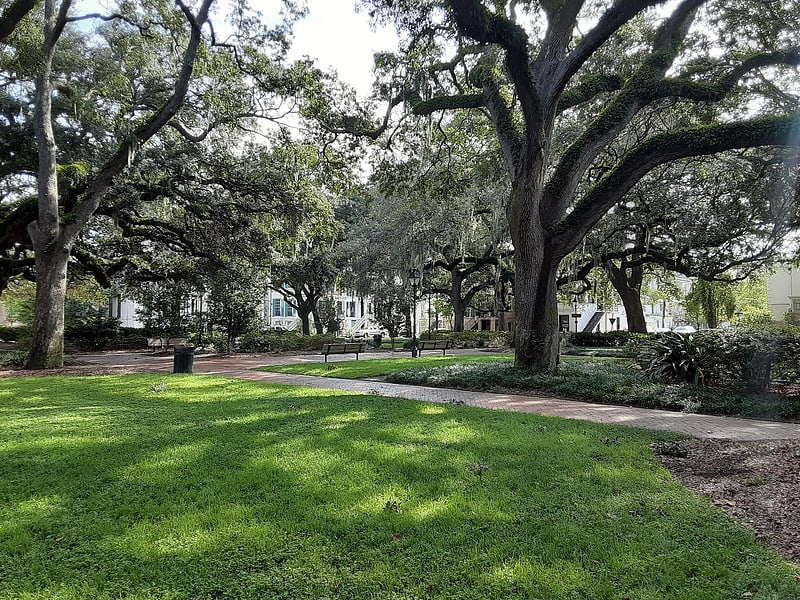
Chatham Square is one of the 22 squares of Savannah, Georgia, United States. It is located in the fifth row of the city's five rows of squares, on Barnard Street and West Wayne Street, and was laid out in 1847. It is south of Pulaski Square and west of Monterey Square in the southwestern corner of the city's grid of squares. The square is named for William Pitt, 1st Earl of Chatham. Although Pitt never visited Savannah, he was an early supporter of the Georgia colony and both Chatham Square and Chatham County are named in his honor. The oldest building on the square is the Enoch Hendry Row House, at 108–112 West Taylor Street, which dates to 1851.
Chatham Square is sometimes known locally as Barnard Square, in reference to the 1901-built Barnard Street School (which actually stands at 212 West Taylor Street) and has served as a building for the Savannah College of Art and Design since 1988. The college renamed it Pepe Hall.
The square contains a sundial dedicated to African-American politician Louis Burke Toomer in 1964.[25]
Address: 180 W Taylor St, Savannah (Downtown Savannah)
Lutheran Church of the Ascension
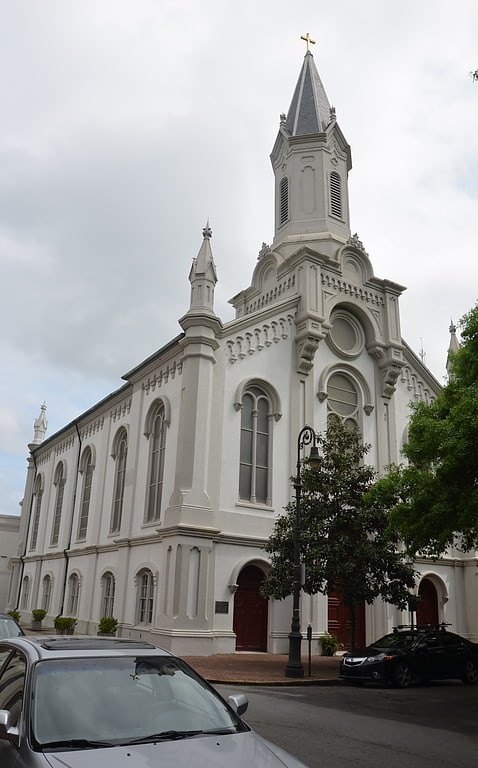
The Lutheran Church of the Ascension is a historic Lutheran church in Savannah, Georgia, located in the Savannah Historic District. The congregation was founded by Johann Martin Boltzius in 1741, with the current building constructed in 1843.[26]
Address: 120 Bull St, 31401-3751 Savannah (Downtown Savannah)
Ellis Square
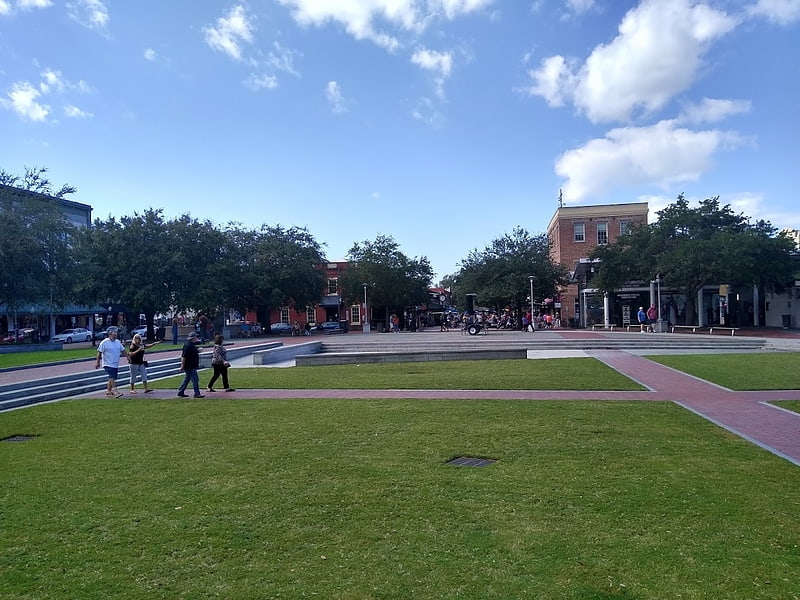
Ellis Square is one of the 22 squares of Savannah, Georgia, United States. It is located in the first row of the city's five rows of squares, on Barnard Street and West St. Julian Street, and was one of the first four squares laid out. Today, it marks the western end of City Market. The square is east of Franklin Square, west of Johnson Square and north of Telfair Square. The oldest building on the square is the Thomas Gibbons Range, at 102–116 West Congress Street, which dates to 1820.
Decker Square, as it was originally known, was laid out in 1733 as part of Decker Ward, the third ward created in Savannah. The ward and square were named for Sir Matthew Decker, one of the Trustees for the Establishment of the Colony of Georgia in America, Commissioner of funds collection for the Trust, director and governor of the East India Company, and member of Parliament. The square was renamed for Sir Henry Ellis, the second Royal Governor of the colony of Georgia.
It was also known as Marketplace Square, as from the 1730s through the 1950s it served as a center of commerce and was home to four successive market houses. Prior to Union General Sherman's arrival in December 1864, it was also the site of a slave market with some indications of slaves being held under the northwest corner of the square. A large brick building, now known as the John Montmollin Building, was built in 1855 to house the slave market, facing south on Barnard Street.
In 1954, the city signed a 50-year lease with the Savannah Merchants Cooperative Parking Association, allowing the association to raze the existing structure and construct a parking garage to serve the City Market retail project. Anger over the demolition of the market house helped spur the historic preservation movement (most notably the Historic Savannah Foundation) in Savannah. The outer structure of this city market building influenced the design of the Kroger grocery store on Gwinnett Street and the Publix grocery store in the Twelve Oaks shopping center on Abercorn Street.
When the garage's lease expired in 2004, the city began plans to restore Ellis Square. The old parking garage was demolished in 2006 to make way for a new public square (park) that features open spaces for public concerts, as well as an underground parking garage on Whitaker Street. The underground facility was completed and formally dedicated in January 2009.
A bronze statue, by Susie Chisholm, of songwriter-lyricist Johnny Mercer, a native Savannahian, was formally unveiled in Ellis Square on November 18, 2009.
Ellis Square officially reopened at a dedication ceremony held on March 11, 2010.
The six-story Cay Building, at 22 Barnard Street, was completed in 2012.[27]
Address: Ellis Square, 31401 Savannah (Downtown Savannah)
First African Baptist Church

Place of worship in Savannah, Georgia. First African Baptist Church, located in Savannah, Georgia, claims to be derived from the first black Baptist congregation in North America. While it was not officially organized until 1788, it grew from members who founded a congregation in 1773. Its claim of "first" is contested by the Silver Bluff Baptist Church, Aiken County, South Carolina, and the First Baptist Church of Petersburg, Virginia, whose congregation officially organized in 1774.
First African Baptist Church operates a museum which displays memorabilia dating back to the 18th century.[28]
Address: 23 Montgomery St, 31401-2429 Savannah (Downtown Savannah)
Wright Square
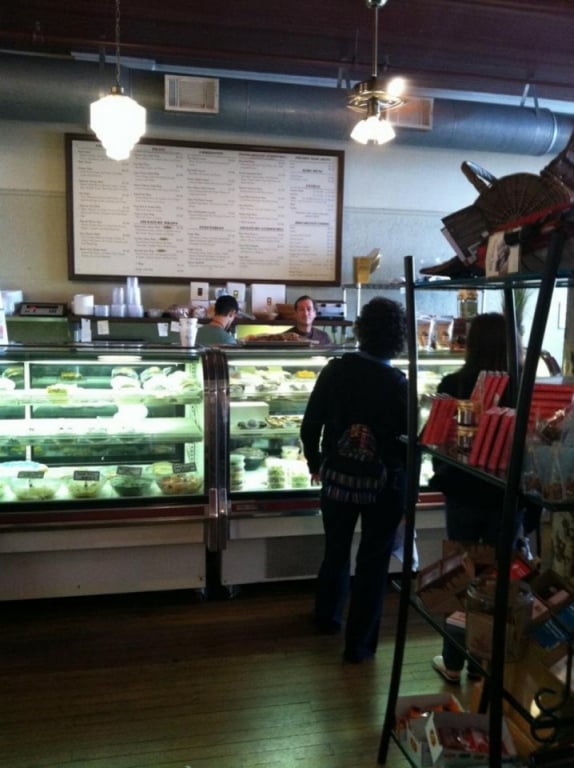
Wright Square is one of the 22 squares of Savannah, Georgia, United States. It is located in the second row of the city's five rows of squares, on Bull Street and President Street, and was laid out in 1733 as one of the first four squares. It is south of Johnson Square, west of Oglethorpe Square, north of Chippewa Square and east of Telfair Square. The oldest building on the square is the William Waring Property, at 12 West State Street, which dates to 1825.
The second square established in Savannah, it was originally name Percival Square, for John Percival, 1st Earl of Egmont, generally regarded as the man who gave the colony of Georgia its name (a tribute to Great Britain's King George II). It was renamed in 1763 to honor James Wright, the third and final royal governor of Georgia. Throughout its history it has also been known as Court House Square and Post Office Square; the present Tomochichi Federal Building and United States Court House is adjacent to the west.
The square is the burial site of Tomochichi, a leader of the Creek nation of Native Americans. Tomochichi was a trusted friend of James Oglethorpe and assisted him in the founding of his colony. When Tomochichi died in 1739, Oglethorpe ordered him buried with military honors in the center of PercIval Square. In accordance with his people's customs the grave was marked by a pyramid of stones gathered from the surrounding area. In 1883, citizens wishing to honor William Washington Gordon replaced Tomochichi's monument with an elaborate and highly allegorical monument to Gordon, called the William Washington Gordon Monument. William Gordon is thus the only native Savannahian honored with a monument in one of the city's squares. Gordon's own daughter-in-law, Nellie Gordon, objected strongly to this perceived insult to Tomochichi. She and other members of the Colonial Dames of the State of Georgia planned to erect a new monument to Tomochichi, made of granite from Stone Mountain. The Stone Mountain Monument Company offered the material at no cost. Mrs. Gordon felt that she was being condescended to and insisted on paying. The Monument Company sent her a bill—some sources say for 50 cents, others for one dollar—payable on Judgment Day. Mrs. Gordon paid the bill and attached a note explaining that on Judgment Day the Dames "would be too busy attending their own duties on that momentous day." The new monument was erected in 1899. It stands in the southeast corner of the square and eulogizes Tomochichi as a great friend of James Oglethorpe and the people of Georgia.
6 East State Street, in the northeastern tything lot of the square, doubled as Dixie's Flowers, the flower shop Mandy works at in Midnight in the Garden of Good and Evil.
Bradley Lock and Key, located in the Patrick Duffy Building at 24 East State Street, also in the northeastern tything lot, is the oldest operating business in Savannah.[29]
Address: 21 W York St, 31401 Savannah (Downtown Savannah)
Whitefield Square
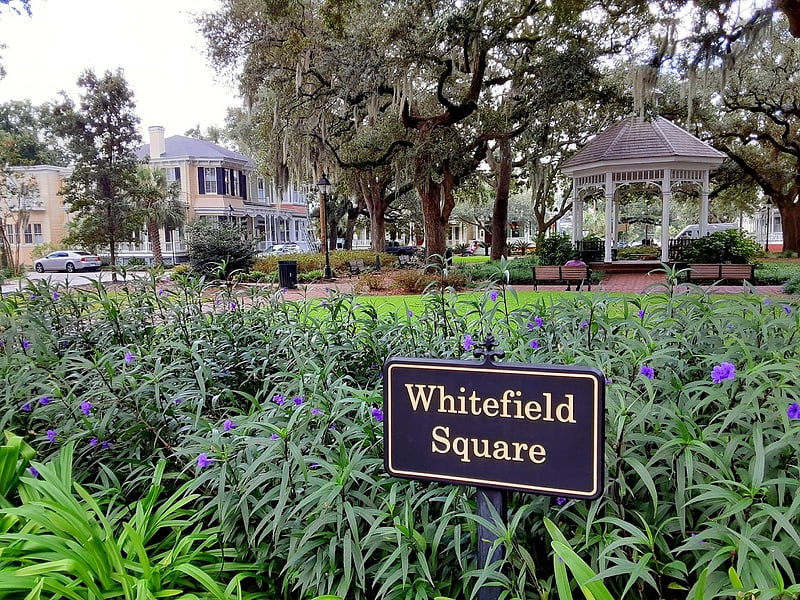
Whitefield Square is one of the 22 squares of Savannah, Georgia, United States. It is located in the fifth row of the city's five rows of squares, on Habersham Street and East Wayne Street, and was the final square laid out, in 1851. It is south of Troup Square and east of Calhoun Square in the southeastern corner of Savannah's grid of squares. The oldest building on the square is at 412–414 East Taylor Street, which dates to 1855.
It is named for the Rev. George Whitefield (whose last name is pronounced Whitfield), founder of Bethesda Home for Boys (a residential education program – formerly the Bethesda Orphanage) in the 18th century, and still in existence on the south side of the city.
The square has a gazebo in its center.
A notable building facing the western side of the square is the First Congregational Church. Other prominent, though 20th-century, buildings are the Rose-of-Sharon Apartments (which occupies the entire northwestern tything block) and, across Habersham Street, the Red Cross Building.
The square was once a burial ground for African-American slaves. Due to this connection, a movement was started in 2021 to rename the square Jubilee Square, after Jubilee Freedom Day, the day when General William Sherman arrived in Savannah in 1864 to begin enforcing Abraham Lincoln's Emancipation Proclamation.
Andrew Bryan, the founder of the First African Baptist Church, was buried in the square, as was Henry Cunningham, the minister of the Second African Baptist Church.[30]
Address: Whitefield Square, 31401 Savannah (Downtown Savannah)
Telfair Museums
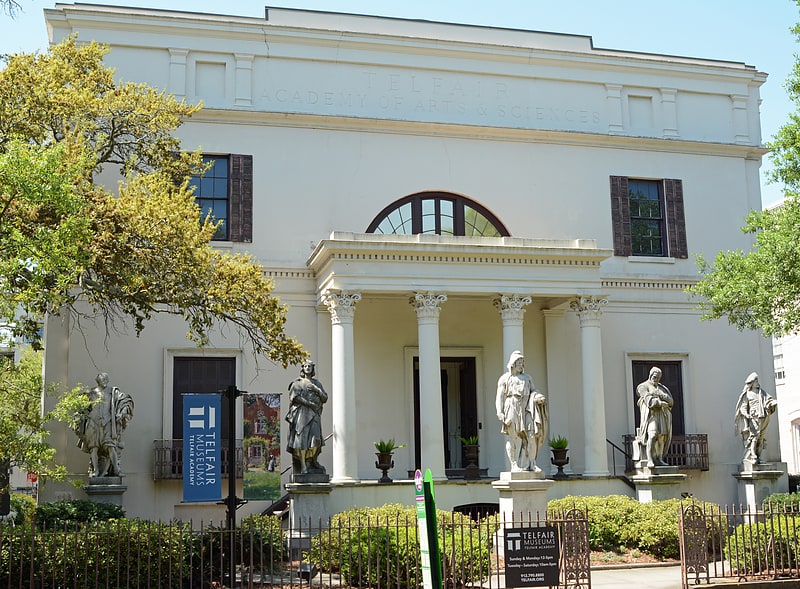
Museum in Savannah, Georgia. Telfair Museums, in the historic district of Savannah, Georgia, was the first public art museum in the Southern United States. Founded through the bequest of Mary Telfair, a prominent local citizen, and operated by the Georgia Historical Society until 1920, the museum opened in 1886 in the Telfair family’s renovated Regency style mansion, known as the Telfair Academy.
The museum currently contains a collection of over 4,500 American and European paintings, sculptures, and works on paper, housed in three buildings: the 1818 Telfair Academy (formerly the Telfair family home); the 1816 Owens-Thomas House & Slave Quarters, which are both National Historic Landmarks designed by British architect William Jay in the early nineteenth century; and the contemporary Jepson Center for the Arts, designed by Moshe Safdie and completed in 2006.[31]
Address: 121 Barnard St, 31401-3612 Savannah (Downtown Savannah)
Juliette Gordon Low Birthplace
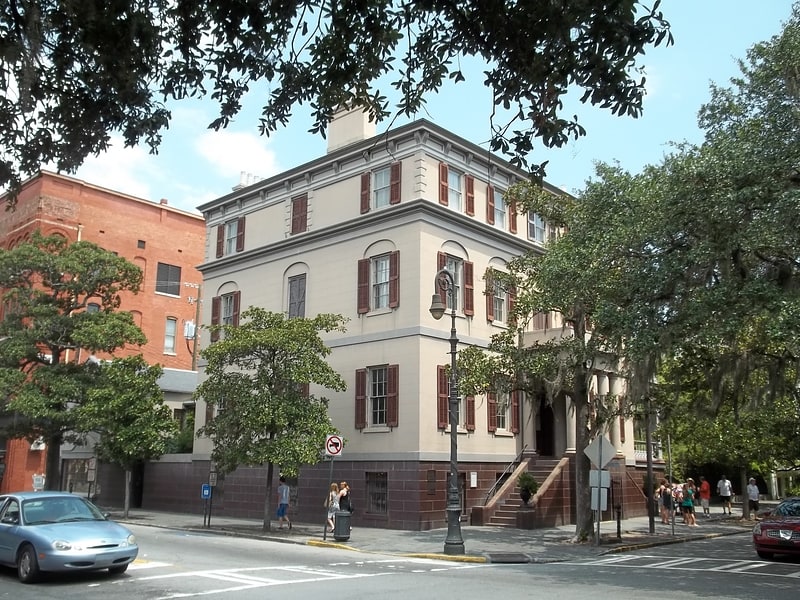
History museum in Savannah, Georgia. Juliette Gordon Low Historic District consists of three buildings—the Juliette Gordon Low Birthplace (also known as Wayne-Gordon House, First Girl Scout Headquarters, which was the carriage house for the Andrew Low House, converted for use by the Girl Scouts in May–June 1912, and said Andrew Low Carriage House, is a site in Savannah, Georgia, significant for its association with Juliette Gordon Low and the founding of the Girl Scouts of the USA.
The district includes the Wayne-Gordon House at 10 East Oglethorpe Avenue, which is also known as Juliette Gordon Low Birthplace, the First Girl Scout Headquarters (Andrew Low Carriage House) at 330 Drayton Street, and the Andrew Low House at 329 Abercorn Street.
The Birthplace was designated as a National Historic Landmark in 1965. the initial designation included the First Girl Scout Headquarters. the Andrew Low House was later added to the designation creating the Juliette Gordon Low Landmark District.[32]
Address: 10 E Oglethorpe Ave, 31401-3707 Savannah (Downtown Savannah)
Sorrel Weed House
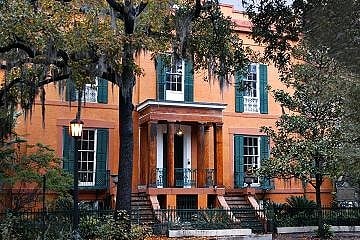
Museum in Savannah, Georgia. The Sorrel–Weed House, or the Francis Sorrel House, is a historic landmark and Savannah Museum located at 6 West Harris Street in Savannah, Georgia. It represents one of the finest examples of Greek Revival and Regency architecture in Savannah and was one of the first two homes in the State of Georgia to be made a State Landmark in 1954. At 16,000 square feet, it is also one of the largest houses in the city. The Sorrel–Weed House was first opened to the public in January 1940 by the Society for the Preservation of Savannah Landmarks. It was the society's first exhibit and was called "The Society for the Preservation of Savannah Landmarks Presents a loan Exhibit of Furniture and Fine Arts 18th and 19th Centuries at the Sorrel-Weed House on Madison Square: Jan-April 1940." This society later became the Historic Savannah Foundation. The Sorrel–Weed House was opened again to the public in 2005 and conducts Historic Savannah Tours during the day and Savannah Ghost Tours inside the house every evening. These tours are conducted by The Sorrel-Weed House Museum. It is located at the corner of Bull Street and Harris Street.
The Sorrel–Weed House was the boyhood home of Brigadier General Moxley Sorrel, who fought for the Confederate States of America during the Civil War. He served under General James Longstreet, and after the War wrote "Recollections of a Confederate Staff Officer", considered to be one of the top postwar accounts written. General Robert E. Lee visited the home in late 1861 and early 1862. He and Francis Sorrel had been friends since the early 1830s. Lee also visited the Sorrel family in April 1870, shortly before his death.
A.J. Cohen, Sr. a prominent Savannah businessman bought the Sorrel-Weed house in 1941. The Cohen family lived in the home for more than fifty years. A.J. Cohen, Jr. built a brick addition to the house and opened Lady Jane, an upscale women's clothing store which thrived in Savannah for decades. The store closed in 1991, and the home was bought by Stephen Bader in 1996. Bader removed the brick addition soon after his purchase.
The opening scene of the 1994 film Forrest Gump was filmed from the rooftop of the Sorrel–Weed House and is a popular tourist stop. The scene, which begins with a floating feather through the Savannah sky, pans the rooftops of other buildings occupying Madison Square as seen from the very top of the Sorrel–Weed home. The scene is then spliced to a scene of another church located on Chippewa square, where ultimately, Forrest is seen sitting on a bench.
The house was investigated by TAPS during a special 2005 Halloween Special episode of Ghost Hunters. The house was also featured on HGTV's "If Walls Could Talk" in March 2006. It was also investigated by the Ghost Adventures crew in 2014. The house was featured on the Travel Channel's " The Most Terrifying Places in America" in 2010, and on the Paula Deen Network in 2015.
The house is a contributing property to the Savannah Historic District.[33]
Address: 6 W Harris St, 31401-4354 Savannah (Downtown Savannah)
Talmadge Memorial Bridge
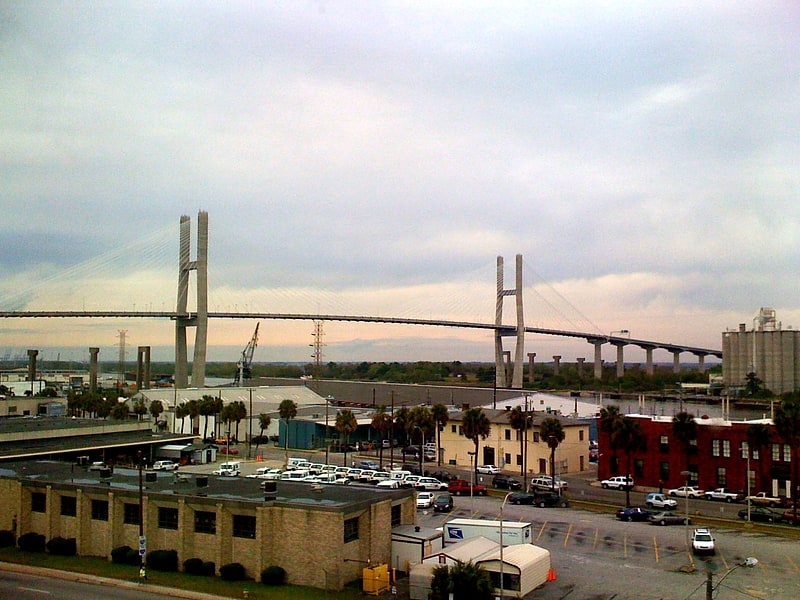
Cable-stayed bridge in Savannah, Georgia. The Talmadge Memorial Bridge is a bridge in the United States spanning the Savannah River between downtown Savannah, Georgia and Hutchinson Island. It carries US 17/SR 404 Spur. The original bridge was built in 1953; a replacement bridge was completed in 1991, also referred to as the Talmadge Memorial Bridge.[34]
Savannah Theatre
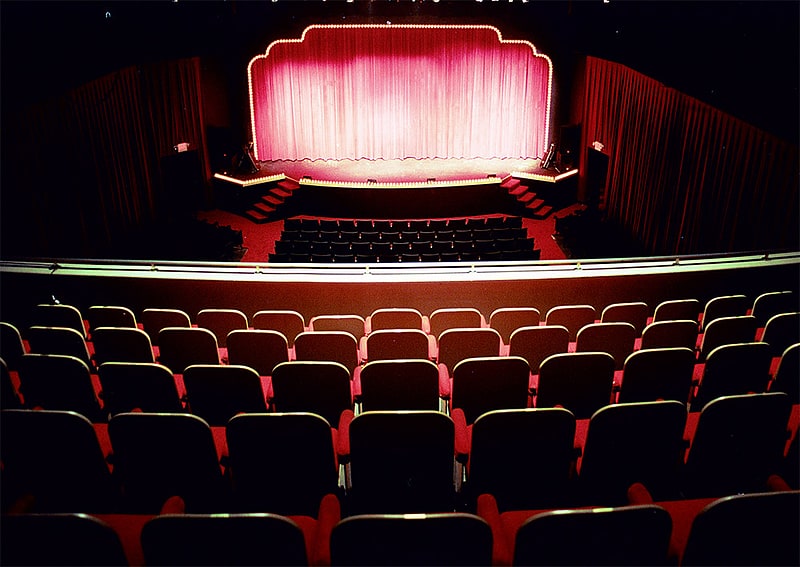
Theatre in Savannah, Georgia. The Savannah Theatre, first opened in 1818 and located on Chippewa Square in Savannah, Georgia, is one of the United States' oldest continually-operating theatres. The structure has been both a live performance venue and a movie theater. Since 2002, the theatre has hosted regular performances of a variety of shows, primarily music revues.[35]
Address: Savannah, 222 Bull Street